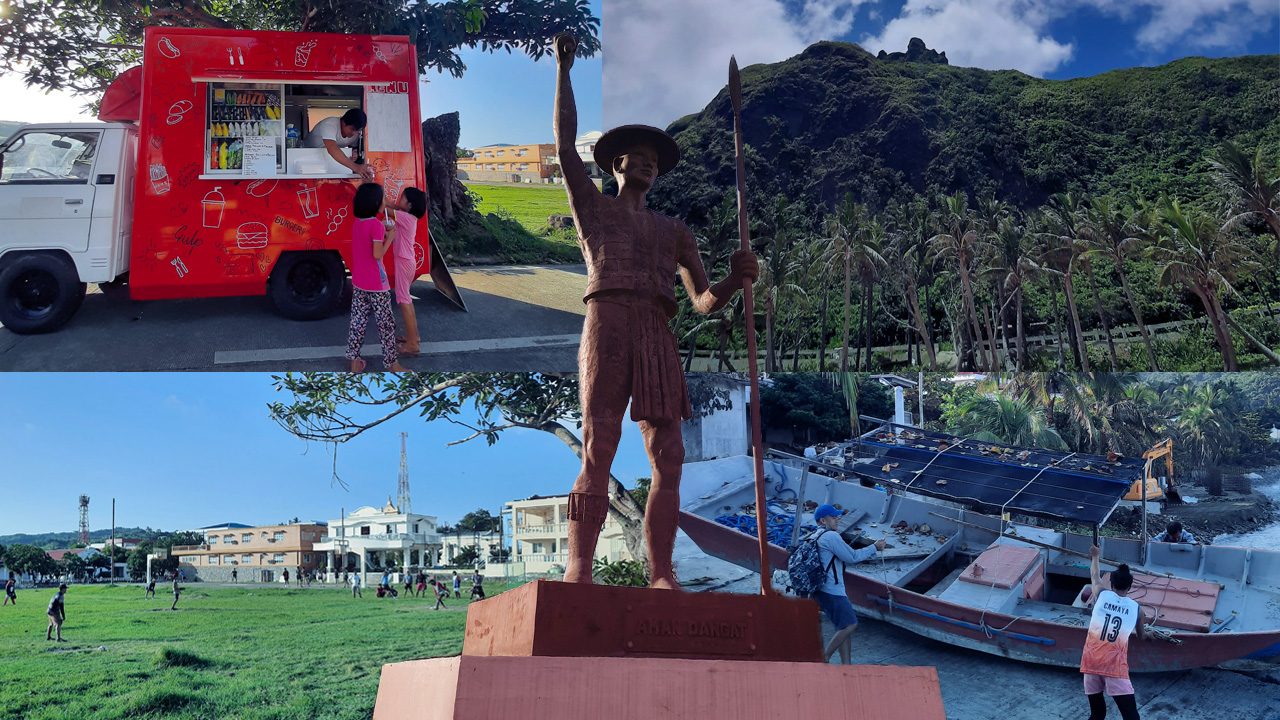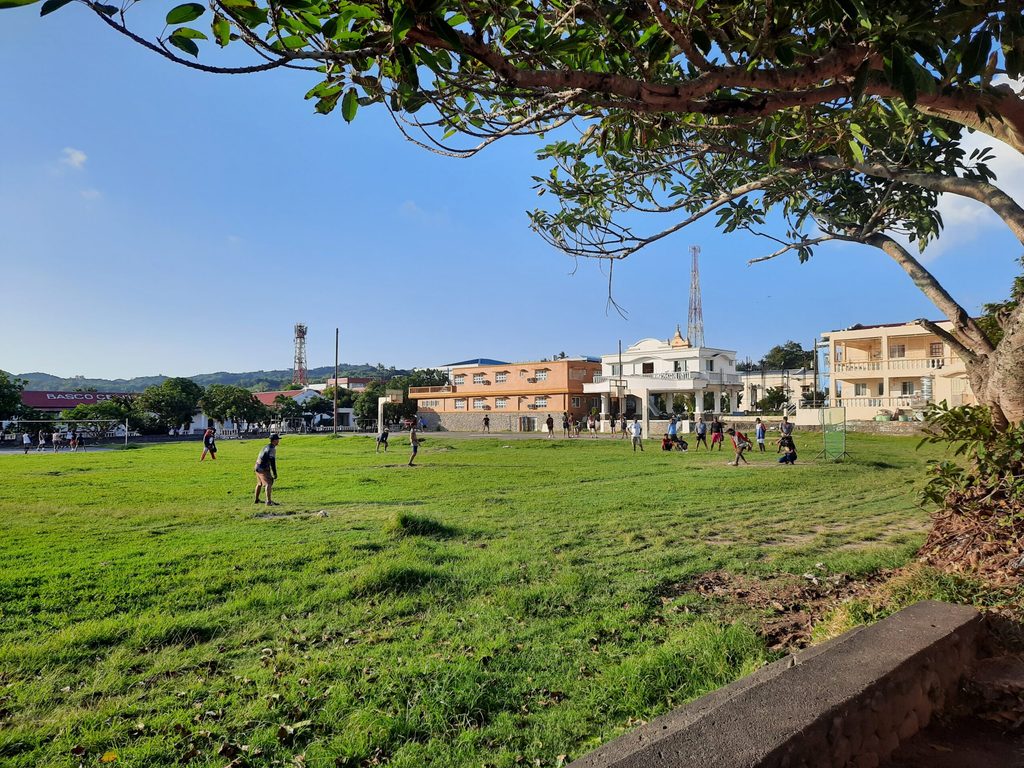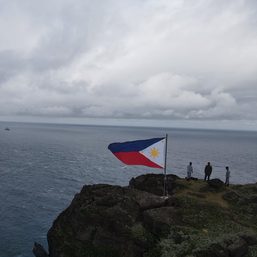SUMMARY
This is AI generated summarization, which may have errors. For context, always refer to the full article.

It was 5 am on Friday, the first day after Typhoon Betty had left the Philippine Area of Responsibility. My friend and I were sitting in the waiting lounge of NAIA’s Terminal 2. Outside, the sky was gray but it was not raining, the first time in several days.
We had made arrangements for our girls’ trip to Batanes in February. We were traveling on the first week of June, knowing full well the risk of flights being delayed or canceled. As minutes ticked by, we stared out through the glass to the tarmac outside. We could see some planes parked and some buses moving about.
The PA system crackled and we heard the announcement: as of 5:30 am there was a red lightning alert, so all airline operations were grounded until further notice.
That’s okay, I thought. It wasn’t a cancellation.
I had dreamed of traveling to Batanes for about 10 years. I knew there was a small window when it was safest to travel: summer time, when there was the best chance to enjoy the outdoors without danger of rains dampening the trip.
When Betty started whipping through Luzon, we monitored the weather, hopeful but also cautious. Would we make it?
I smiled when a voice on the PA system said: PAGASA has lifted the red lightning alert.
Soon, we were walking to our plane. It was smaller than most commercial flights, but still bigger than the planes that fly to Caticlan. The flight was practically full. I took my seat on the last row: 23.
Approaching Basco, I could see from my window seat the rich blue waves crashing, then the undulating hills carpeted with deep green grass.
At the airport, there was some fanfare. We were on the very first flight that had been allowed into Batanes after one week.
When Bert, the owner of the hotel where we would stay, welcomed us at the airport, he apologized. The typhoon had delayed the arrival of the fuel tanker carrying the diesel for the power plant, so electricity was limited to 10 hours each day. But it would arrive soon, maybe today, he said.
We had a hearty breakfast of flying fish. The Ivatans so respect the environment, they even hold rituals before embarking on fishing trips for this delicious delicacy caught only during the summer.
As we walked to the town center, people greeted us sincerely. We observed this throughout our stay. Sometimes, they would just smile, or say “Good morning/evening,” or wave as people passed.
There was no aggressive selling or solicitation.
We saw activity around the Batanes State College canteen. Inside, it was lively, with a few children and adults milling about. Shelves were full of snacks and refrigerators filled with a variety of cold drinks. We realized they had a generator, and, after paying for our purchases, sat down at a co-working space. We met some students and even a pet cat.
According to our tour guide, Manny, the Batanes island group is a protected area and ancestral domain. Of the 10 islands, only three are inhabited: Batan (where Basco is located), Sabtang (30 minutes from Batan by boat), and Itbayat (2.5 hours from Batan).
Many people have likened Batanes to Ireland, but to me, it felt like New Zealand – based on photos and videos that I’ve seen. The green pasturelands, blue waters, fine white sand and gray-and-white boulder beaches, and wide expanse elicited many wows. The hashtag #BreathtakingBatanes does not come close to capturing it.

We were also told that Batanes has many primary schools, with one class having a 1:1 student to teacher ratio. I thought this was a joke, but Manny reassured us it was true. Batanes also has a literacy rate above 97% and zero out-of-school youth.
Though not part of the tours, the Ivatans respect their ancient culture, knowing where fortresses and burial sites are located. We viewed them from a respectful distance.
You won’t notice it immediately, but touring the islands, you won’t see electric cables distracting from the sights. Most of the cables are buried underground.
Because many typhoons pass through Batanes, they are not merely resilient but have learned their lessons: whenever they find out that a typhoon is coming, they secure their houses.
In many villages, we saw rows of beautiful stone houses with a boat instead of a car parked outside, and a bicycle or motorcycle out back.
The morning we would cross the open waters to Sabtang Island was the first day that boats were allowed to go out to open seas again. While waiting for the faluwa (local boat) that we could ride, we heard a small commotion and saw a few young men dragging a boat, being pulled by a small truck, from the street toward the shore. After a few minutes, they had set the fiberglass boat down at the edge of the water, and the rest of the men went on their way.

One evening, after a filling dinner of vunong (fish, beef, pork, and pounded rootcrops with turmeric rice wrapped in breadfruit leaves) with maruya (banana fritters) as dessert, we wanted to walk to our accommodations just over one kilometer away. We asked our server for directions. After telling us, she added in Filipino: “If you get lost, you can ask people for directions, they’ll tell you the truth.” I was touched by that sincerity.
I learned more about the world-renowned artist Pacita Abad, whose Fundacion Pacita continues to help Ivatan artists with training and resources, as well as Ivatan cultural conservation efforts.
I also learned about two exemplary Ivatans from Sabtang. Kenan Aman Dangat was a chieftain who led the armed resistance against the abusive Spanish authorities and was executed in Basco in September 1791. His monument stands at the Basco Provincial Capitol. Emilia Cabrera Domine was a member of the BISUMI Fighters guerrilla command during the Japanese occupation. She was tortured to death for refusing to give up information about her compatriots.

On Sunday, I walked the short distance between our hotel and the plaza, and half-paid attention to a baseball game and basketball game happening side by side on the field. I saw two girls claiming cups of milk tea from a food truck. I ordered one from the man who then cheerfully prepared it.

I leaned against one wall of the park while enjoying my drink. Nearby, a mother chatted with her children, a group of old men were discussing animatedly around a table, and a group of boys cheered for players on the field. I felt at ease in my surroundings. I didn’t feel like anyone was paying particular attention to me.

I have traveled alone many times and it’s not uncommon for people to shoot curious looks my way then whisper among themselves or even have someone come up to me to ask questions. But here, in the middle of the capital of Batanes, I felt blissfully left alone.
It was a nice way to wind down my first trip to the northernmost province of our country. I hope to be back. – Rappler.com
Mari-An C. Santos is an Aries Rufo Journalism fellow.
Add a comment
How does this make you feel?





There are no comments yet. Add your comment to start the conversation.